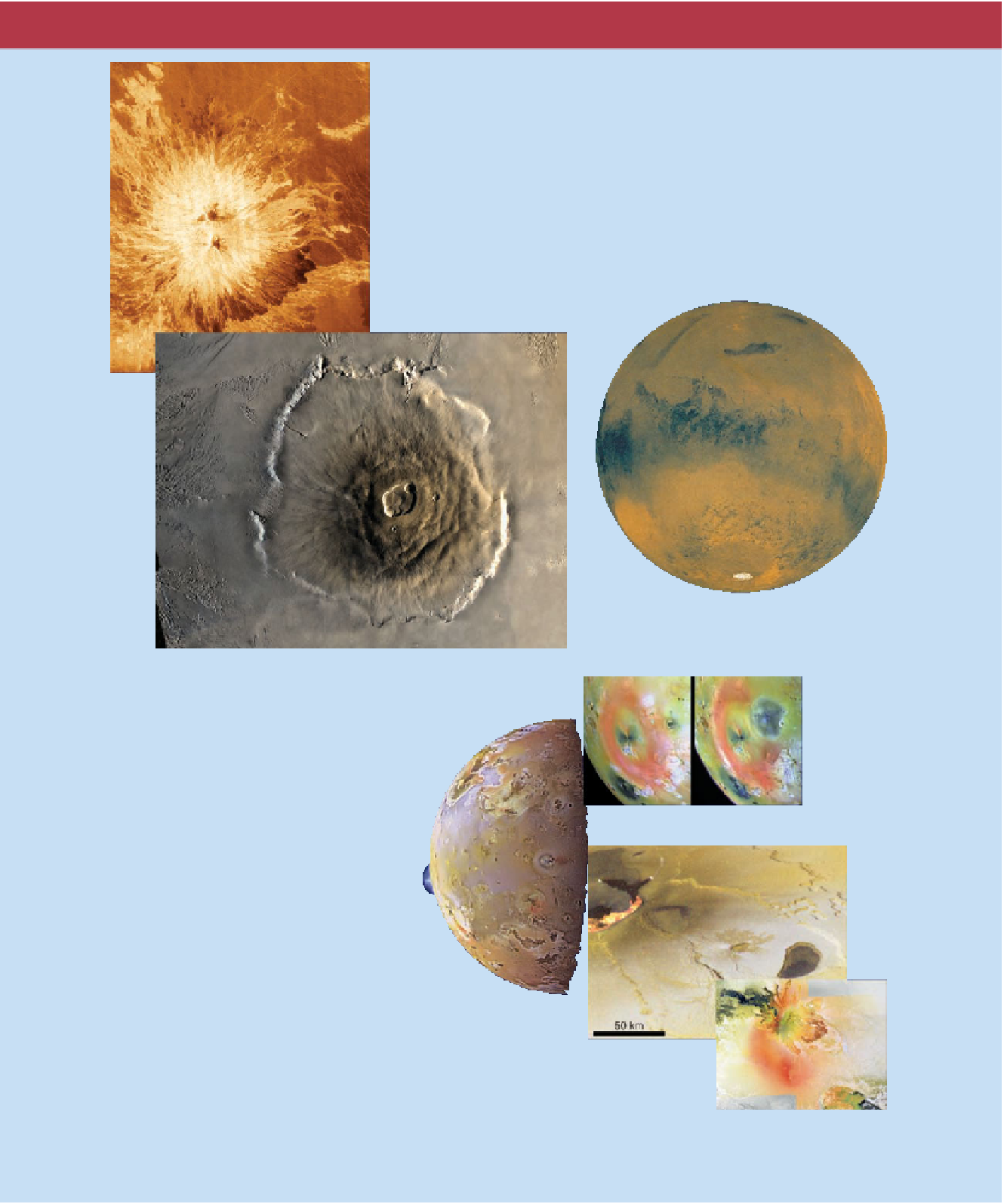Geology Reference
In-Depth Information
6. Volcano Sapas Mons contains two lava-filled calderas
and is flanked by lava flows, attesting to the volcanic
activity that was once common on Venus.
Mars, the Red Planet, has numerous features that indicate an extensive early period
of volcanism. These include Olympus Mons, the solar system's largest volcano, lava
flows, and uplifted regions thought to have resulted from mantle convection. In addition
to volcanic features, Mars displays abundant evidence of tensional tectonics, including
numerous faults and large fault-produced valley structures. Whereas Mars was
tectonically active during the past, no evidence indicates that plate tectonics
comparable to that on Earth has ever occurred there.
.
8. A photomosaic of Mars shows a
variety of geologic structures,
including the southern polar ice cap.
7. A vertical view of Olympus Mons, a shield volcano and the largest
volcano in our solar system. The edge of the Olympus Mons
caldera is marked by a cliff several kilometers high rather than
a moat as in Mauna Loa, Earth's largest shield volcano.
Although not a terrestrial planet, Io, the innermost
of Jupiter's Galilean moons, must be mentioned.
Images from the
Voyager
and
Galileo
spacecrafts
show that Io has no impact craters. In fact, more
than a hundred active volcanoes are visible on
the moon's surface, and the sulfurous gas and
ash erupted by these volcanoes bury any newly
formed meteorite impact craters. Because of its
proximity to Jupiter, the heat source of Io is
probably tidal heating, in which the resulting
friction is enough to at least partially melt
Io's interior and drive its volcanoes.
9. Volcanic features of Io, the innermost moon of
Jupiter. As shown in these digitally enhanced
color images, Io is a very volcanically active moon.
443

Search WWH ::

Custom Search